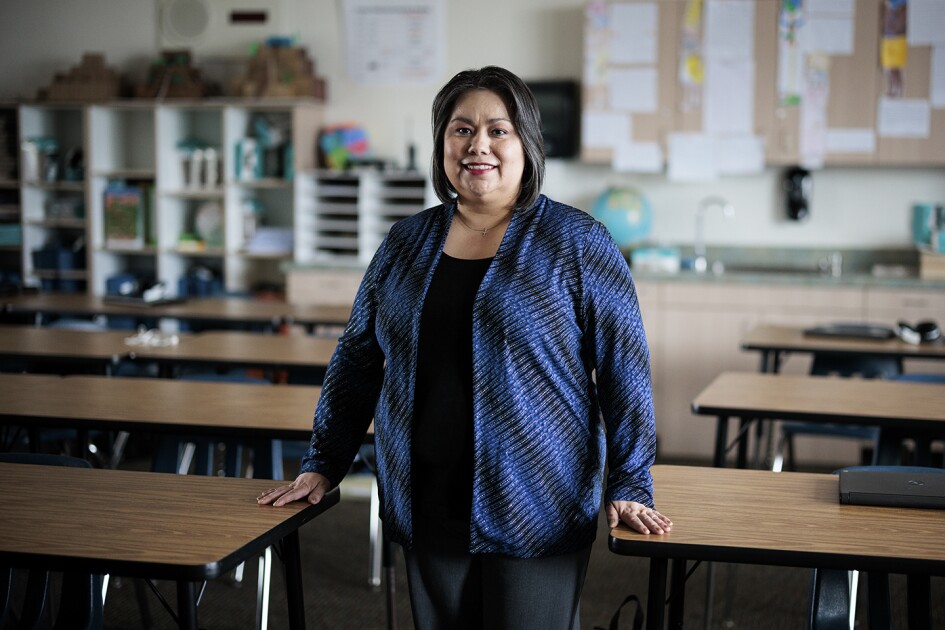The National Assessment of Educational Progress released the 2022 scores in history and civics for 8th graders earlier this month. I cannot say I was surprised by the decline. As others have noted, decreased time spent on social studies, a lack of funding, and recent state legislation prohibiting the teaching of a full and honest history were likely contributing factors.
I’d like to make the case that each of those causes represent a larger issue worth addressing: the lack of respect or attention to history education. This lack of respect permeates school buildings in how tests are built, professional development is allotted, teacher bonuses are awarded, and teaching assignments are given.
When I was still teaching middle school history in south Los Angeles, I often felt like a second string support staff for my English/language arts counterparts. They were teaching the “more important” skill of literacy, while I was supporting them with interesting stories of the past. I’ve heard other social studies teachers express similar sentiments.
Most people do not actually see history as a discipline. They see it as a content. This distinction is crucial. When we only see history as a content of stories to be told, we get lost in the weeds of which stories to choose. The ongoing culture wars over what we can teach in history classrooms illustrates how this quickly spirals out of control. Rather than having constructive conversations about competing interpretations of the past, many people have become dogmatic about particular narratives, distracting us from the disciplinary practices inherent to the study of history.
According to Education Week’s tracker, just shy of 90 percent of states in the union have introduced legislation to restrict what is taught in history courses. Eighteen states have successfully implemented such bans. Citizens and their representatives have become so caught up in the “what” of the past, that they forget that history is shaped by specific disciplinary thinking practices.
If we truly care about equipping the next generation of citizens to be proficient in history and civics, we need to start by redefining what it is we do as history teachers. Of course, as I often tell the teachers I coach, this does not mean that we get rid of content in favor of skills, but it does mean that content becomes a means to an end—to the loftier goal of empowering our students to think historically.
Rich scholarship has come out in recent years on historical thinking and the pedagogical tools teachers need to effectively teach students to think historically. I think of the work of Joel Breakstone and Sam Wineburg at Stanford History Education Group, Bruce Vansledright’s scholarship on historical thinking, and the late Peter Seixas’s Canada’s Historical Thinking Project. If we can incorporate this rich body of research into our standards, assessments, and professional development, we can really anchor our classrooms around these evidence-based disciplinary practices.
Unfortunately, this rich field of research does not always make it into classrooms. Even if it does, it is often in an inequitable way, with some passionate teachers seizing the approach for their students, while many other students go their entire educational careers without even hearing the term “historical thinking.”
To break this inequitable implementation, we have to rethink how we measure success. The primary way that most teachers measure success in their classrooms now is a student’s ability to retell us what we told them at an earlier date. While this may encourage our students to become walking encyclopedias—and as Sam Wineburg points out in his 2018 book Why Learn History (When It’s Already on Your Phone), our phones already allow us to be that!—it does not encourage the deep, complex thinking that is expected of professional historians.
We must instead cultivate historical thinkers, empowered to engage with the diversity of ideas that they encounter both in and out of our classrooms.
To do this effectively, we need to build a common language around how we think about history so that social studies teachers don’t just have surface-level conversations about student progress within their content silos. We also need to provide common assessments on historical thinking that facilitate the use of that common language.
When teachers talk about student success, they usually ask each other two questions: “What did they learn in your class?” and “How did it go?” But if we can agree that there are core disciplinary practices to history (like causality, continuity, and historical significance) that define our area of study, we should build our assessments around those principals so that our measurements of student growth are based on student thinking, not content acquisition.
One practical solution I have seen while working for my organization, Thinking Nation, has been to offer rubrics for historical thinking and writing. When social studies teachers have a common language for success, they can provide students individualized feedback and gain rich data on student thinking.
Just as the pedagogical principle of backwards planning emphasizes that teachers “plan with the end in mind,” providing data on student thinking and writing reorients how success is measured in the classroom. This new orientation incentivizes teachers to assess how students think, not just what they know.
We can bring legitimacy back to what we do. Focusing on the discipline rather than the content allows us to rise above the culture wars, redeem ourselves as teachers of literacy so that we can properly collaborate with other content areas, and, most importantly, empower our students with the skills and dispositions to reinvigorate a visibly injured democracy.
As a bonus? Yeah, the NAEP scores will increase, too.









